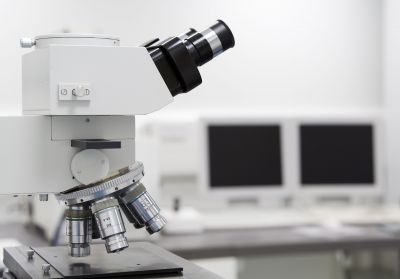
Prostate cancer is the most common form of male cancer in the UK and affects more than 40,000 men each year.
The prostate gland is found in males only. It is located inside the pelvis and is similar in size to a tangerine. The prostate gland is involved in the production of semen and surrounds the urethra (the narrow tube that carries urine from the bladder to the penis).
What causes prostate cancer?
Like most forms of cancer, there is no clear cause of prostate cancer, but certain risk factors have been identified. Risk factors don’t necessarily mean that you’ll develop as certain disease, but they do increase your risk of doing so.
Risk factors for prostate cancer include:
- Age – prostate cancer is much more common in older men and the majority of men with prostate cancer are aged over 50
- Ethnicity – prostate cancer is more common in people with an African and African-Caribbean heritage. The reason for this is not clear
- Family history – men who have a brother or father with prostate cancer are more likely to develop this form of cancer, especially if the relative was diagnosed at a young age
- Sedentary lifestyles – men who exercise regularly have a lower risk of developing prostate cancer
- Obesity – research suggests that being overweight can increase your risk of prostate cancer
- Diet – although research is ongoing, there are links between diet and risk of prostate cancer. Eating foods containing lycopene and selenium, such as tomatoes and Brazil nuts respectively, can decrease the risk of prostate cancer
What are the symptoms of prostate cancer?
Symptoms of prostate cancer can take a long time to become apparent and often go unnoticed until the tumour has grown to a size affecting the urethra. Symptoms caused by the tumour include:
- More frequent need to urinate
- Feeling the need to rush to the toilet
- Hesitating before urination
- Struggling or taking a long time to urinate
- Urinating frequently during the night
It is worth noting that these symptoms are also linked to natural enlargement of the prostate gland, which occurs as a result of ageing. This is also known as benign (non-cancerous) prostatic hyperplasia. However it’s important to visit your doctor if you do experience any of the above symptoms.
If the cancer has spread to other parts of the body, the individual may experience back pain, unexplained weight loss, testicular discomfort and an unexplained loss of appetite.
How is prostate cancer diagnosed?
If a GP suspects that you might have prostate cancer, they will refer you for diagnostic tests to confirm or rule out a diagnosis. Tests include a urine sample to identify potential infections that could be causing symptoms, a blood test and a physical examination known as a digital rectal examination.
A blood test called a PSA test is commonly used in the diagnostic process for prostate cancer. This test is designed to measure levels of PSA, a form of protein produced by the prostate gland. Prostate cancer tends to elevate PSA levels, so a high result could indicate cancer. However, it is normal for PSA levels to rise as you age and many men with prostate cancer will not have abnormally high levels of PSA.
A digital rectal examination involves examining the prostate by feeling for signs of enlargement, hardness or changes to the surface of the gland. In the case of benign prostatic hyperplasia, the gland is smooth, but if prostate cancer is present there may be abnormal bumps.
Further testing
If prostate cancer is suspected, further tests will be ordered. These include:
- Biopsy – in this case, a tissue sample is collected in a procedure known as a TRUS (transrectal ultrasound-guided) biopsy
- MRI or CT scan – these scans produce detailed images of the inside of the body
- Isotope bone scan – this scan is usually carried out if doctors suspect the cancer has spread to the bones
How is prostate cancer treated?
Prostate cancer is one of the most treatable forms of cancer, if it is caught early. The 5-year survival rate for stage 1 and 2 cancers (where the cancer is confined to the prostate gland) is more than 90%. Between 65 and 90 percent of men will live more than 10 years after diagnosis.
Treatment options depend on the stage of cancer and whether it has spread to other parts of the body. If the cancer is only very small and restricted to the prostate gland, it might be the case that no treatment is recommended initially. Doctors will adopt a watchful waiting policy in which the patient will be monitored carefully.
If the cancer is confined to the prostate gland and the individual is otherwise in good health, surgery is sometimes the best option. A surgical procedure known as radical prostatectomy is most commonly used.
Radiotherapy and chemotherapy are options if the cancer has spread. Hormone therapy can also be used in conjunction with these methods.